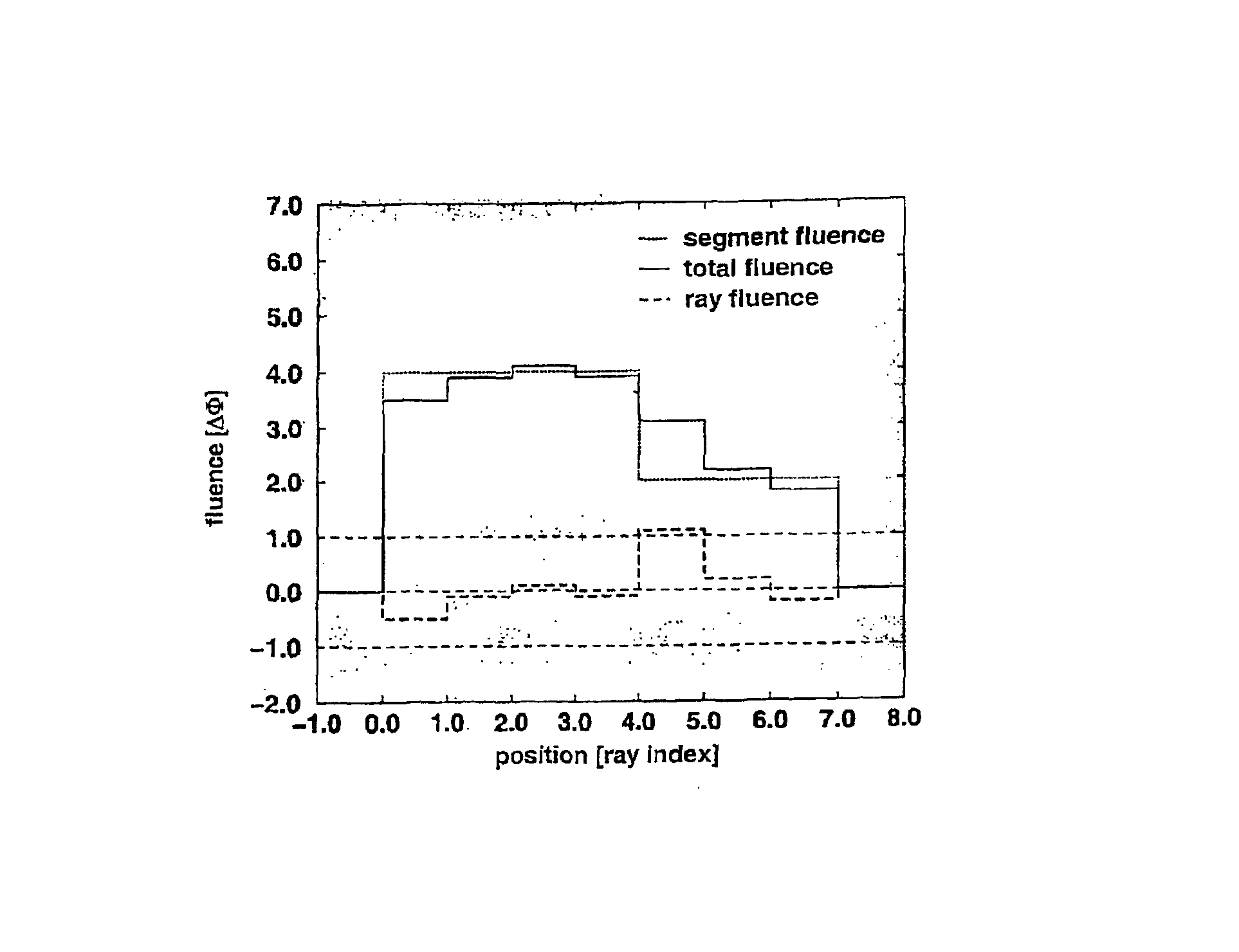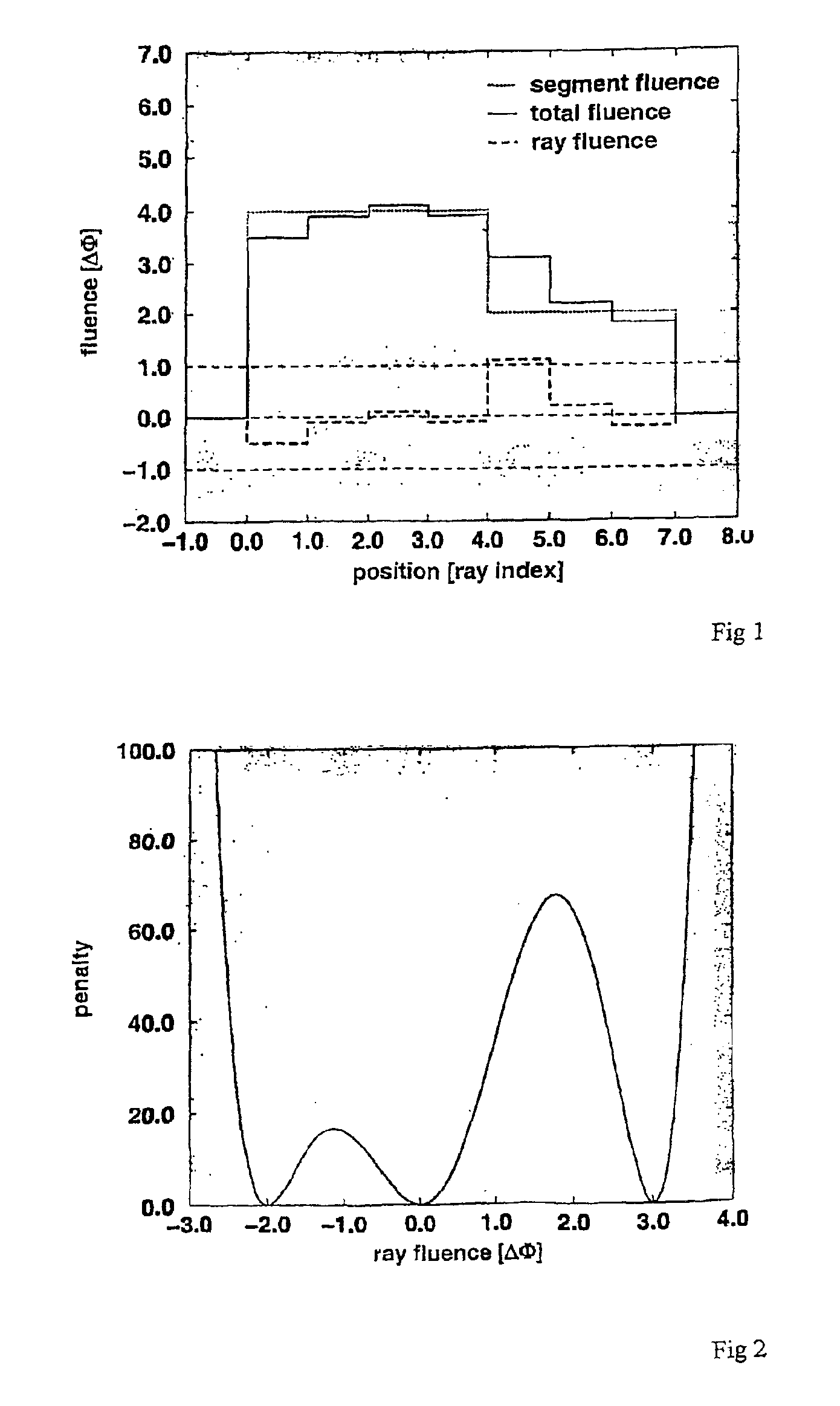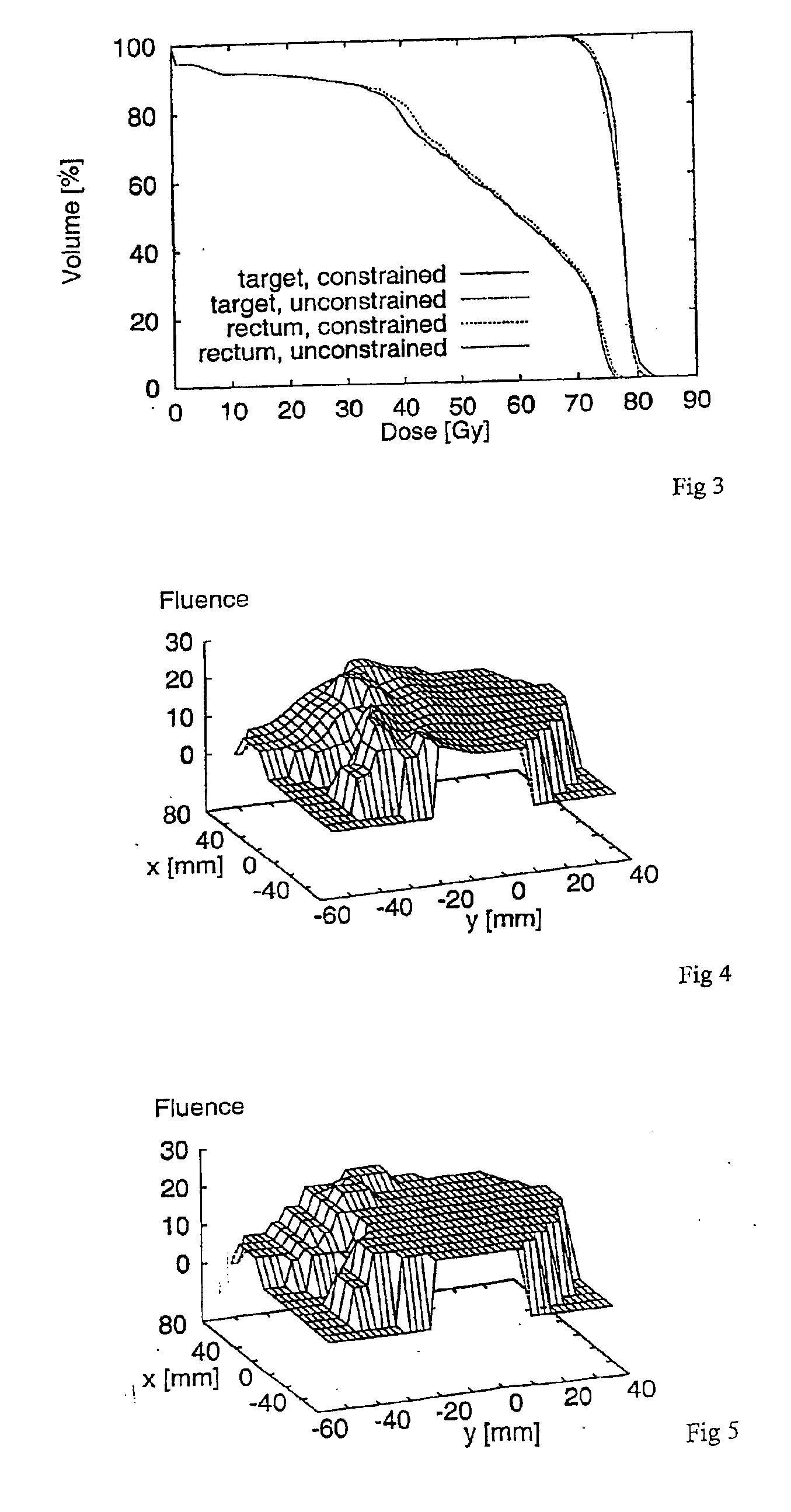Radiotherapeutic apparatus
- Summary
- Abstract
- Description
- Claims
- Application Information
AI Technical Summary
Benefits of technology
Problems solved by technology
Method used
Image
Examples
Embodiment Construction
The setting of the optimisation problem is as follows. Let the fluence distribution φ(x,y) of a given field be composed of fluence elements termed rays Rij, i=1, . . . ,n, j=1, . . . ,m with fluence φij on a regular grid [ia, (i+1)a[x[jb, (j+1)b[for some real distances a, b. The positions of a pair of leafs at times t1, t2 . . . can be described by coordinates with respect to the grid defined by the fluence elements. The total fluence of a ray is the ray fluence φij multiplied by the fluence weight φij.
The fluence distribution is translated by an operator P into a piecewise constant function with clusters of fluence elements of the same weight. These clusters result in a set of leaf coordinates and total fluences for each time tk such that this treatment plan is applicable with the given equipment. Such a pair of leaf coordinates and fluence is termed segment. This translation may be subject to complicated constraints related to the engineering details of the MLC. The hypothetic tra...
PUM
 Login to View More
Login to View More Abstract
Description
Claims
Application Information
 Login to View More
Login to View More - R&D
- Intellectual Property
- Life Sciences
- Materials
- Tech Scout
- Unparalleled Data Quality
- Higher Quality Content
- 60% Fewer Hallucinations
Browse by: Latest US Patents, China's latest patents, Technical Efficacy Thesaurus, Application Domain, Technology Topic, Popular Technical Reports.
© 2025 PatSnap. All rights reserved.Legal|Privacy policy|Modern Slavery Act Transparency Statement|Sitemap|About US| Contact US: help@patsnap.com



